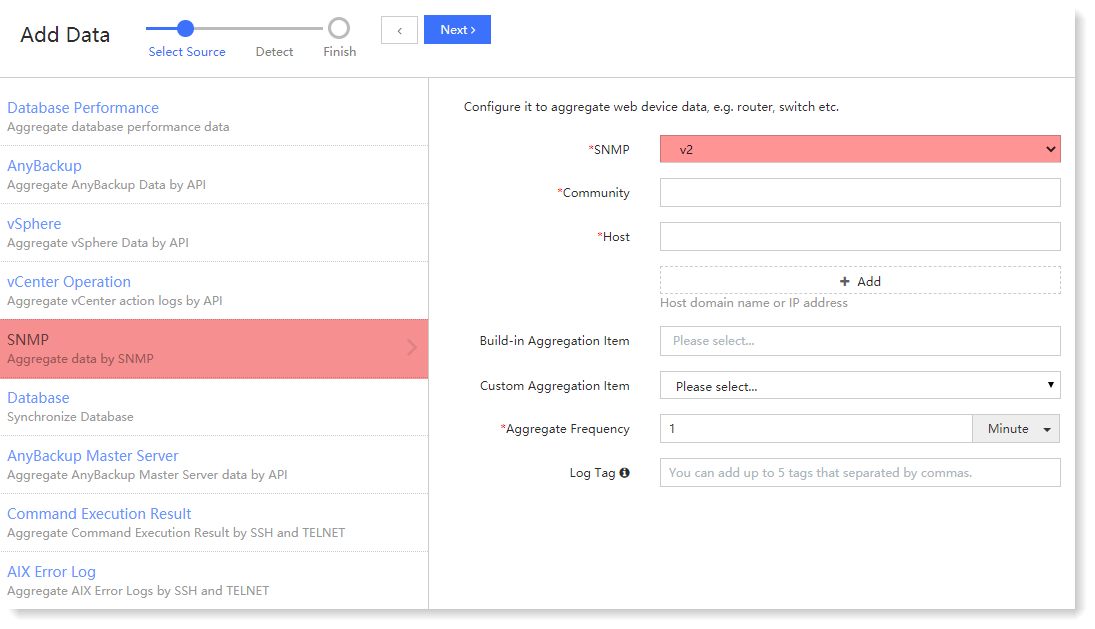Updated at: 2022-12-09 03:49:50
SNMP Data Aggregation is for configuring the log aggregation of network device (such as router, switch, etc.) through SNMP. The specific operations are as follows:
1. Click Remote Aggregation > New to enter the Select Source page, and click SNMP to make configuration, as follows:

• For the SNMP mode as v1 or v2, the configuration parameters are as follows:
• For the SNMP mode as v3, the configuration parameters are as follows: 2. Click Next to Detect. After successful detection, click Next to Finish. The following steps can be performed herein:
• Click Start Search to jump to the Search, and automatically search for the aggregated log data of network device;
• Click View List to jump to the Remote Aggregation list to view the status of aggregation tasks, etc.;
• Click Add More Data to Select Source again and continue to add and configure new remote aggregation tasks.
1. Click Remote Aggregation > New to enter the Select Source page, and click SNMP to make configuration, as follows:

• For the SNMP mode as v1 or v2, the configuration parameters are as follows:
• For the SNMP mode as v3, the configuration parameters are as follows: 2. Click Next to Detect. After successful detection, click Next to Finish. The following steps can be performed herein:
• Click Start Search to jump to the Search, and automatically search for the aggregated log data of network device;
• Click View List to jump to the Remote Aggregation list to view the status of aggregation tasks, etc.;
• Click Add More Data to Select Source again and continue to add and configure new remote aggregation tasks.
< Previous:
Next: >

















